Pollinators are essential because they help transfer pollen from a plant’s male reproductive organ or stamen to the female reproductive organ or pistil. This process is known as pollination and is essential for the reproduction of most flowering plants. Pollinators include bees, butterflies, moths, birds, and bats. By planting cool-season plants, you can provide a valuable food source for pollinators when other food sources are scarce. Not only will you be helping the pollinators, but you’ll also enjoy the beauty of the flowers these plants produce.
You can attract pollinators to your garden, but you should do a few things. You must choose plants that are native to your area. Pollinators are more likely to visit gardens containing native plants because they provide food and shelter. You should plant different flowers that bloom at different times. This will give the pollinators a constant source of food throughout the year. Avoid using pesticides in your garden. Pesticides can kill pollinators, so it’s best to avoid them if you want to attract these beneficial insects to your garden.
Cool-season plants for pollinators
Importance of pollination
Most plants need pollinators to reproduce. When a bee collects nectar from a flower, they also collect pollen on their bodies. As they move from flower to flower, they transfer pollen between the plants, allowing them to fertilize each other and produce fruits or seeds. This process is essential for the reproduction of many plants, including most fruit trees and vegetables.
Without pollinators, many plants could not produce seeds and fruits. This would eventually decrease the number of plants available for animals and humans to eat. Pollinators are declining in many areas due to habitat loss, pesticide use, and other factors. This is a major problem because it threatens the food supply for humans and wildlife. Many organizations are working to protect pollinators by planting native flowers and creating habitats for them.
In case you missed it: Top 20 Garden Plants That Attract Pollinators to Your Garden
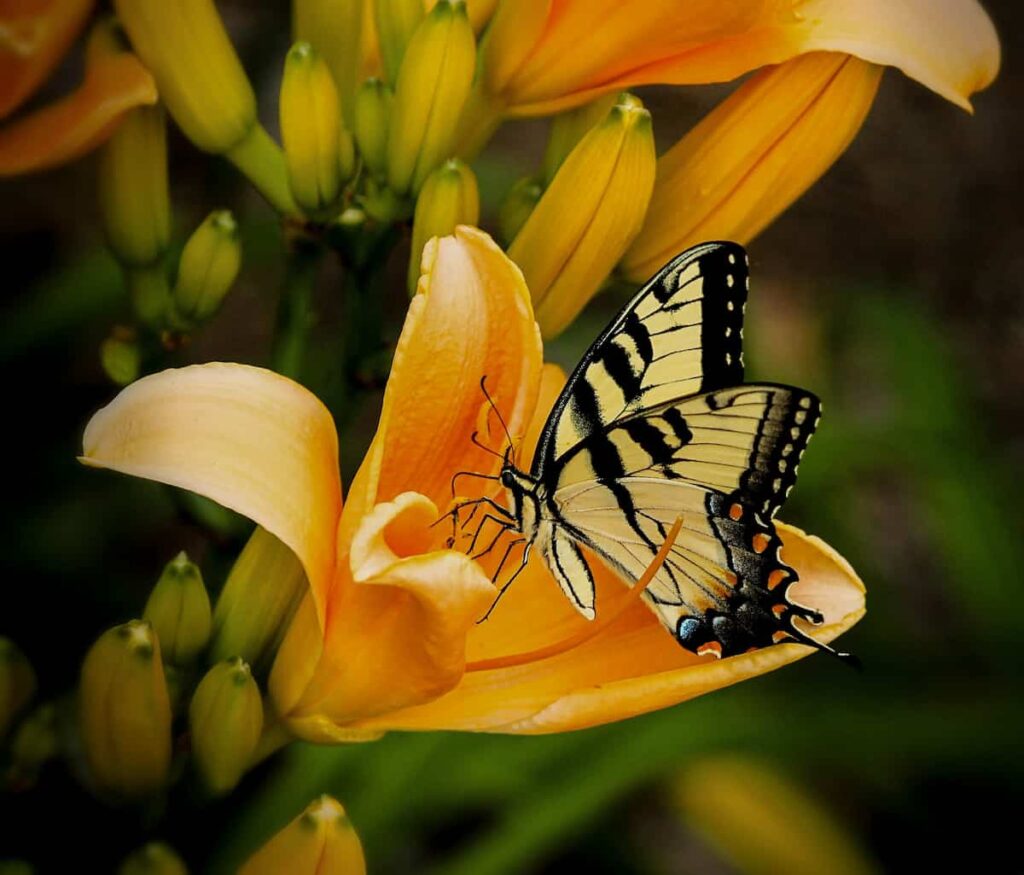
Cool season pollinator-friendly herb plants
Herbs are an excellent choice for cool-season plants because they provide nectar and pollen for bees and other pollinators. They also have a long blooming season and can add color and interest to your garden.
- Basil – This annual herb is a favorite of bees and pollinators. It has a long blooming season and comes in many colors, including purple, red, and white.
- Oregano – This perennial herb is an excellent nectar source for bees. It has a long blooming season and is very easy to grow.
- Lavender – This perennial herb is beloved by bees and other pollinators. It has a beautiful fragrance and produces pretty blue or purple flowers.
- Rosemary – This perennial herb is another excellent choice for bees. It has a strong fragrance and produces pretty blue flowers. Rosemary is an evergreen herb with pretty blue or purple flowers. Rosemary blooms in late spring or early summer.
- Lemon balm – Lemon balm is a fragrant herb with lovely white or yellow flowers. Lemon balm blooms in late spring or early summer.
- Sage – Sage is a staple herb in many kitchens and an excellent plant for pollinators. Sage blooms in late spring or early summer.
- Thyme – Thyme is another fragrant herb with pink, white, or purple flowers. Thyme blooms in late spring or early summer.
In case you missed it: Grow Bag Size Chart in India: For Vegetables, Herbs, and Fruits
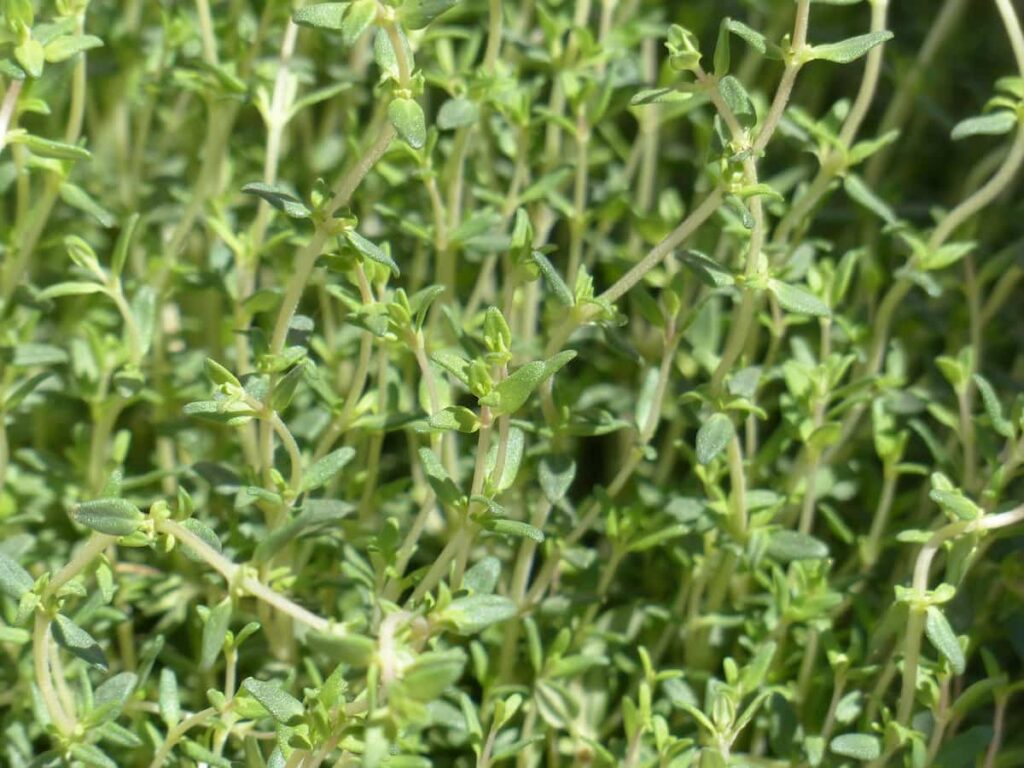
Cool season pollinator-friendly flowering plants
Flowers are an essential part of the landscape for pollinators. They provide nectar and pollen, which are essential for the survival of bees, butterflies, and other pollinators. Many cool-season plants are great for pollinators.
- Aster – Asters are one of the longest-blooming flowers, providing nectar for pollinators from early spring to late fall. They come in various colors: blue, purple, white, and pink. Bees love Aster flowers because they are rich in pollen and nectar. The pollen is exceptionally high in protein, making it an important food source for bees during their development.
- Goldenrod – Goldenrods are a favorite of bees and other pollinators. They bloom in the late summer and early fall.
- Sunflower – Sunflowers are large flowers bloom in the summer and fall. They provide plenty of nectar for bees and butterflies.
- Zinnia – Zinnias bloom from summer to frost and come in various bright colors. They attract both bees and butterflies to the garden.
- Pansies – Pansies are another long-blooming flower, providing nectar for pollinators from early spring. They come in various colors, including yellow, orange, purple, red, and white.
In case you missed it: Soil pH Levels for Vegetables, Fruits, Flowers, and Herbs: How to Lower and Increase Soil pH, Chart and Optimum Range
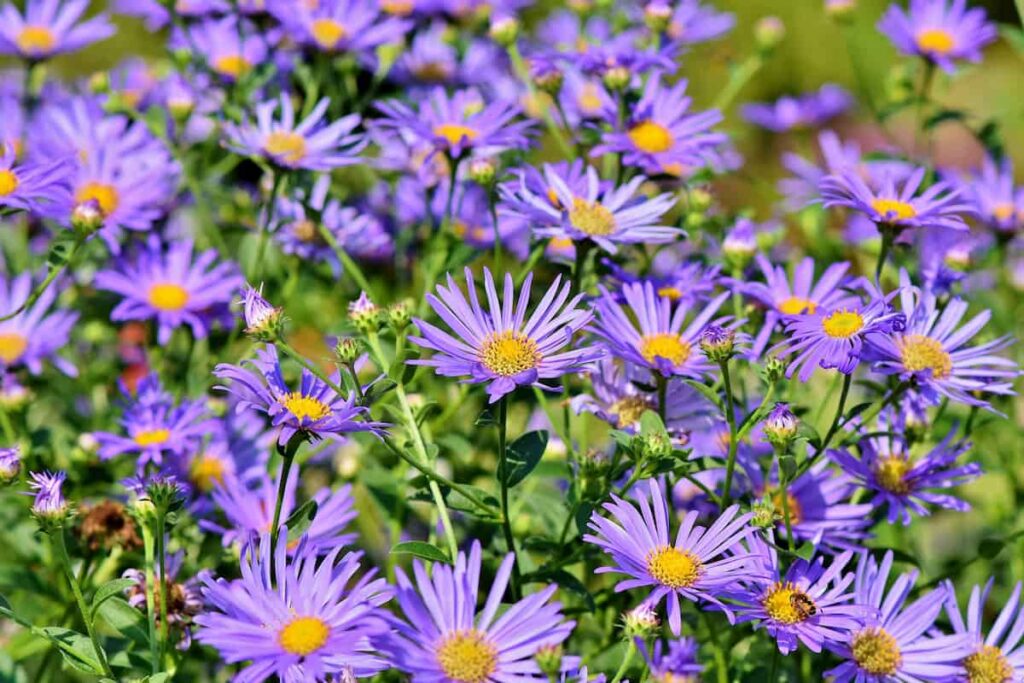
Cool season pollinator-friendly vegetable plants
Many cool-season vegetables are also excellent plants for pollinators.
- Arugula – Arugula is a cool-season annual vegetable plant member of the Brassicaceae family, including Cabbage, Mustard, and Broccoli. The plant produces clusters of small white or yellow flowers that attract bees and other pollinators. Arugula is easy to grow from seed and can be direct-seeded into the garden in early spring or fall. The plants prefer full sun but will tolerate some shade and need well-drained soil.
- Beets – Beets are an excellent cool-season crop for pollinators. They provide nectar for bees and other insects, as well as pollen. Beets also have high sugar content, making them an excellent food source for birds and other animals.
- Broccoli – Broccoli is a versatile cool-season crop that can be grown in many climates. Broccoli flowers are also edible and make a pretty addition to salads or as a garnish.
- Cabbage – Cabbage is a cool-season vegetable that is an excellent plant for pollinators. The large, showy flowers are beautiful to bees and other pollinators. Cabbage provides nectar for bees and pollen; the flowers are also rich in vitamins and minerals. Cabbage is a hardy plant that can tolerate cold temperatures, so it is a good choice for gardeners in cooler climates.
- Carrots – Carrots are one of the top cool-season vegetables for pollinators. Carrots are also a good source of food for birds and other wildlife.
- Cauliflower – Cauliflower is a cool-season vegetable that attracts pollinators. The large, white flowers are beautiful to bees and other pollinators. Cauliflower is also a good source of nectar and pollen.
In case you missed it: How to Grow Cauliflower from Seed to Harvest: A Complete Guide for Beginners
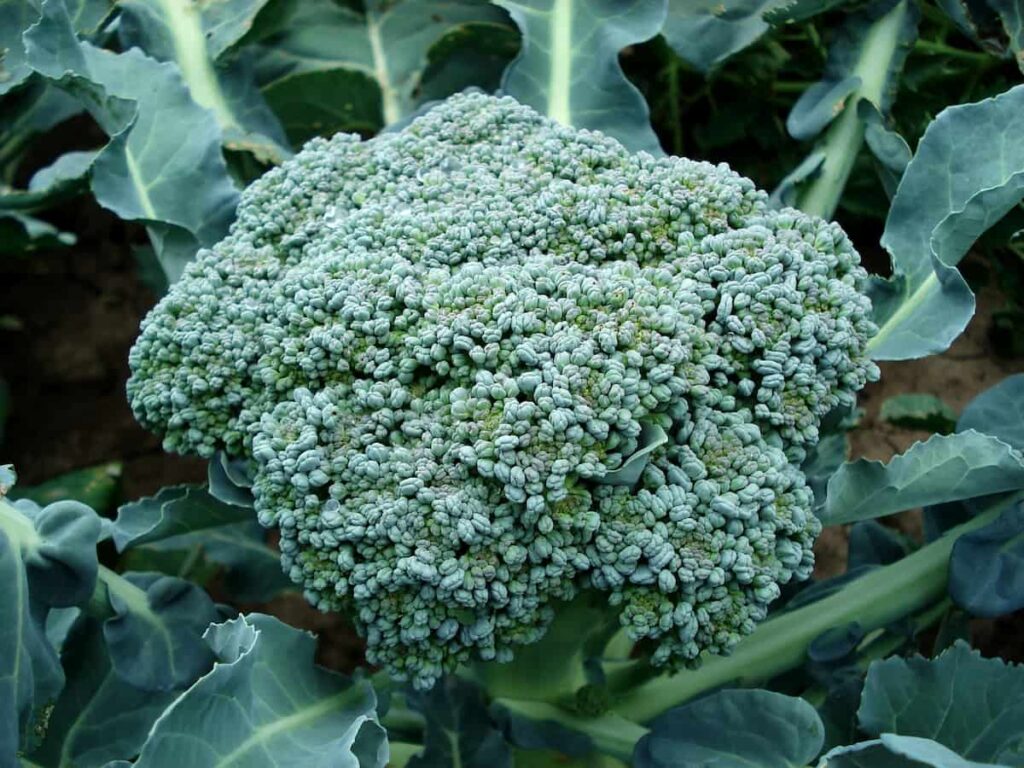
Cool season pollinator-friendly fruit plants
- Strawberry – Strawberries are an excellent source of nectar and pollen for pollinators, especially bees. They also provide shelter and nesting sites for some species of bees. Planting a diversity of strawberry varieties will provide pollinators with the food they need throughout the season.
- Raspberry – Raspberries provide nectar and pollen for pollinators, especially bees. The flowers are borne on 2-year-old canes and produce fruit the following year. Raspberries come in various varieties, including red, black, and purple.
- Blueberry – Blueberries are an excellent source of food for pollinators. They are rich in nectar and provide a good source of pollen. Blueberries grow best in full sun and need well-drained soil. They are relatively drought-tolerant and can be planted in early spring or fall.
- Cranberry – Cranberries are a valuable source of nectar and pollen for bees and other pollinators. They are early-flowering plants, blooming in late spring or early summer. Cranberries grow best in cool, moist climates and require chilling to produce fruit. Some varieties of Cranberry are self-fertile, but cross-pollination by bees will result in a larger crop.
- Cherry – They provide food for pollinators early in the season when few other flowers bloom. Cherry blossoms are also a source of nectar for bees. Planting a diversity of Cherry trees will provide blooms throughout the spring as different cultivars bloom at different times.
- Grape – One of the best cool-season fruit plants for pollinators is the Grape. Grapes give nectar to bees and other pollinators, providing shelter and nesting sites for many species of bees.
- Apple – Apple trees are a great source of food for pollinators, especially during the cooler months when other food sources are scarce. When choosing an Apple tree for your garden, be sure to select a variety that is known to be attractive to pollinators.
- Pear – Pear trees are an excellent food source for bees and provide nectar and pollen that these important insects need to survive. While most Pear trees are self-pollinating, planting two different varieties will ensure a bountiful harvest. When choosing a Pear tree for your garden, select one native to your region.
- Apricot – Apricots are a great option when it comes to cool-season fruit plants for pollinators. The Apricot is a small, round fruit that is typically orange or yellow in color.
In case you missed it: India Fruit Planting Calendar: Month-wise Growing Chart, Gardening Schedule
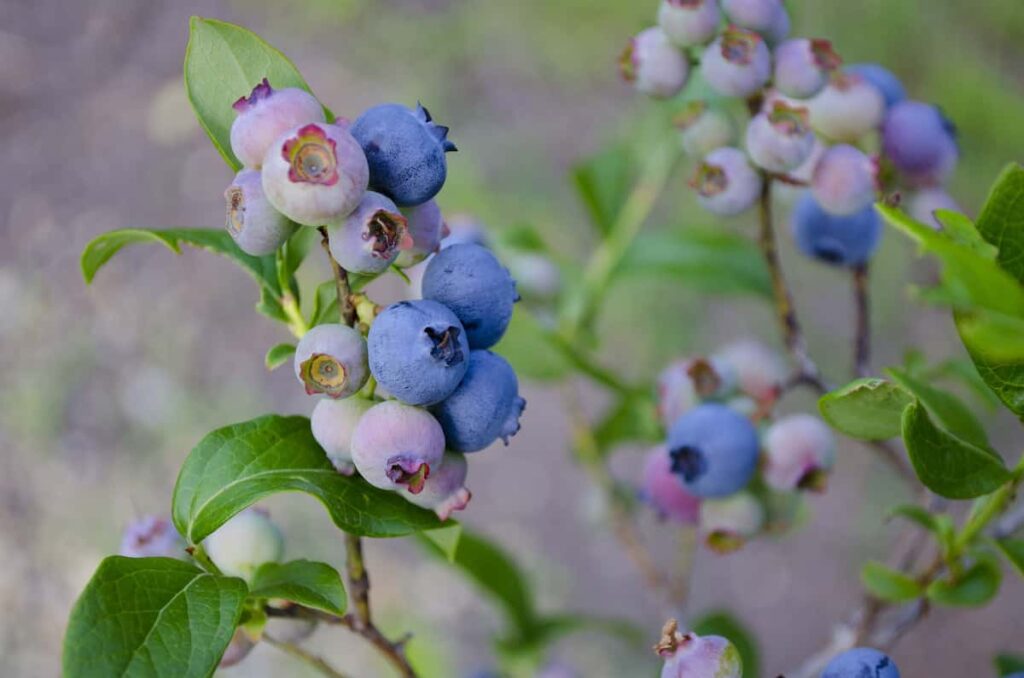
Cool season pollinator-friendly shrubs and trees
The best cool-season shrubs and trees for pollinators are those that produce nectar and pollen early in the season before most other plants have started to bloom.
- Azara microphylla – It produces small, yellow flowers in early spring, a favorite of bees and other pollinators.
- Hamamelis virginiana – Its fragrant, yellow flowers appear in late winter or early spring, providing an essential source of nectar and pollen for hungry bees.
- Mahonia bealei – Another excellent choice for gardeners in colder climates, this shrub produces clusters of fragrant, yellow flowers in late winter or early spring.
- Butterfly bush – This deciduous shrub is a favorite of bees and butterflies, providing nectar from late summer into fall. You can grow this in full sun and well-drained soil.
- Crape myrtle – Another deciduous shrub, Myrtle blooms throughout the summer with large clusters of flowers attracting bees, butterflies, and hummingbirds. It requires full sun but can tolerate some shade.
- Snowberry – This shrub is covered in white berries in fall, providing birds with food. It has small pink flowers in early summer that attract bees and other pollinators.
In case you missed it: Growing Indoor Shrubs – A Full Guide
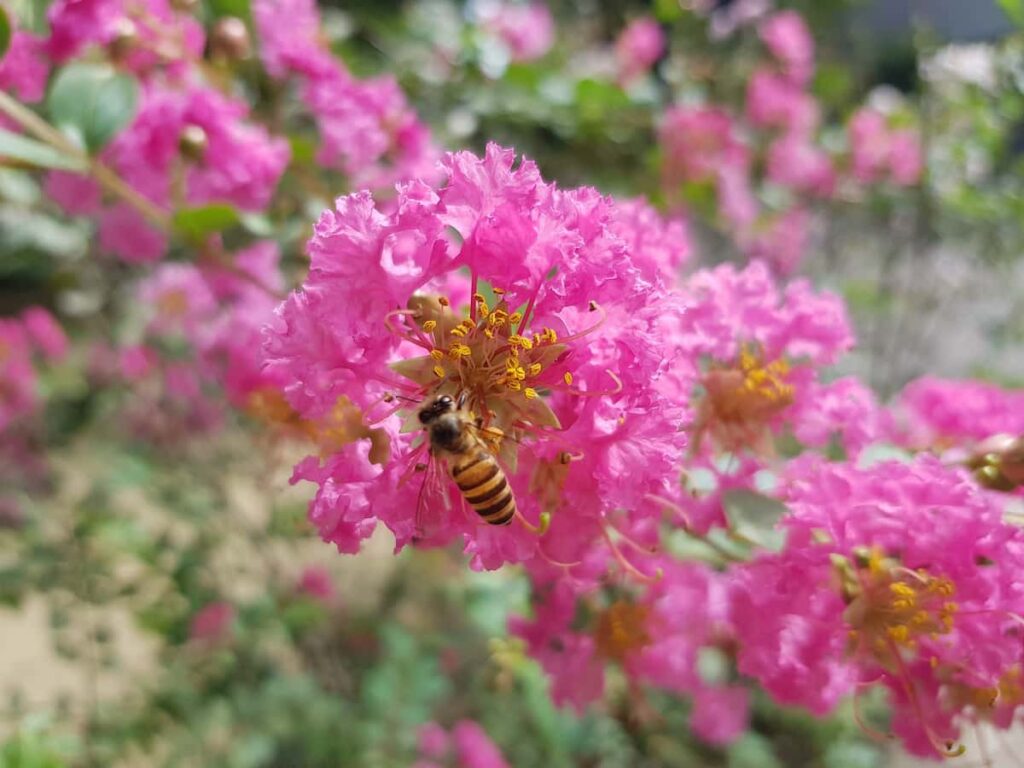
How to care for cool-season plants for pollinators?
When it comes to growing plants that attract pollinators, there are a few key things to remember for proper care. Water them regularly and deeply, especially during dry spells. Fertilize them yearly with a balanced fertilizer or compost tea. Prune them as needed to maintain a healthy shape and size.
Protect them from pests and diseases by using organic methods whenever possible. Provide them with plenty of sunlight for at least 6 hours daily. Following these simple tips ensures that your cool-season plants provide the best possible pollinator habitat.
Conclusion
As the weather cools, many pollinators begin to slow down or enter into hibernation. However, a few hardy pollinators can still search for food on cool-season plants. By planting a diversity of cool-season flowers, you can provide a much-needed food source for these pollinators. By planting a mix of cool-season annuals, perennials, and shrubs, you can provide pollinators with the food they need throughout the year. Be sure to include a variety of plant species in your garden to provide different levels of nectar and pollen for different pollinators.
- How to Grow Hibiscus from Flower
- Plantation Ideas for Home Decoration: A Beginners Guide
- Flower Garden Designs and Layouts for Beginners
- Planting and Spacing Techniques in Papaya: A Beginner’s Guide
- Growing Gold: Essential Techniques for Planting Pineapples
- How to Make Kalanchoe Plant Bushy: Home Remedies and Solutions
- 11 Reasons Why Your Gardenia is Not Blooming: Home Remedies and Solutions
- Eco Elegance: The Guide to Designing a Drought-Tolerant Landscape
- Gardening on a Slope: Strategies for Hillside Landscaping
- Nourish and Flourish: Top Organic Mulches for Thriving House Plants
- Everything You Want to Know about Indian Mogra Flower: Discover Uses and Growing
- Green Thumb Success: Expert Tips for Cultivating Greenhouse Pumpkins All Year Round
- Maximize Growth & Flavor: The Ultimate Guide to Companion Planting in Herb Gardens
- How to Control Rhododendron Problems Naturally: Home Remedies and Organic Ways to Fix Them
- Natural Magic: The Remarkable Benefits of Cinnamon for Plants
- Best Steps to Revive Dying Tulip with Natural and Organic Treatment
- 10 Reasons Why Your Angel Trumpet is Not Blooming: Remedies and Treatment
- How to Fix Periwinkle Leaf and Flower-Related Problems: Natural Remedies and Solutions
- How to Fix Zinnias Leaf and Flower Problems: Discover Natural and Home Remedies
- Organic Steps to Induce Lemon Tree Flowers: A Comprehensive Guide
- Bloom Booster: Crafting the Perfect Homemade Bougainvillea Fertilizer
- Optimizing Growth: A Guide to Applying NPK Fertilizer for Potted Plants
- 10 Best Homemade Fertilizers for Rubber Plant: DIY Recipes and Application Method
- How to Boost Female Pumpkin Flowers: Effective Steps for More Flowers and High Yields
- Transform Your Indoor Garden: Top Benefits of Pink Salt for Houseplants
- 10 Best Homemade Fertilizers for Peacock Plants (Calathea): Easy DIY Guide
- Unlock Blooms: 9 Reasons Why Your Potted Chrysanthemum is Not Blooming
- 8 Reasons Why Your Potted Hibiscus is Not Blooming: Fix it with Simple Solutions
- Unlock Blooms: 9 Key Reasons Your Potted Frangipani Won’t Flower
- 10 Reasons Why Is My Ice Plant Not Blooming: Remedies and Treatment
- 10 Reasons Why My Potted Hydrangea Not Blooming: Treatment and Remedies
- 10 Reasons Why is My Wisteria Not Blooming: Remedies and Treatment
- 10 Reasons Why is My Goldfish Plant Not Blooming: Remedies and Treatment
- Maximize Your Space: Ultimate Guide to Balcony Gardening with Grow Bags
- 10 Reasons Why Your Iris is Not Blooming: Remedies and Treatment
- 10 Reasons Why Your Anthurium Plant is Not Blooming: Treatment and Remedies